1. Weidinger S, Novak N. Atopic dermatitis. Lancet. 2016; 387:1109–1122. PMID:
26377142.

2. Boguniewicz M, Leung DY. The ABC's of managing patients with severe atopic dermatitis. J Allergy Clin Immunol. 2013; 132:511–512.e5. PMID:
23905920.

3. Park JS, Kim BJ, Park Y, Lee SY, Kim WK, Kim JE, et al. KAAACI work group report on the treatment of severe/recalcitrant atopic dermatitis. Korean J Asthma Allergy Clin Immunol. 2010; 30:255–270.
4. Kim JE, Kim HJ, Lew BL, Lee KH, Hong SP, Jang YH, et al. Consensus guidelines for the treatment of atopic dermatitis in Korea (part II): systemic treatment. Ann Dermatol. 2015; 27:578–592. PMID:
26512172.

5. Kim DH, Kang KH, Kim KW, Yoo IY. Management of children with atopic dermatitis. Pediatr Allergy Respir Dis. 2008; 18:148–157.
6. Akdis CA, Akdis M, Bieber T, Bindslev-Jensen C, Boguniewicz M, Eigenmann P, et al. Diagnosis and treatment of atopic dermatitis in children and adults: European Academy of Allergology and Clinical Immunology/American Academy of Allergy, Asthma and Immunology/ PRACTALL Consensus Report. Allergy. 2006; 61:969–987. PMID:
16867052.
7. Schneider L, Tilles S, Lio P, Boguniewicz M, Beck L, LeBovidge J, et al. Atopic dermatitis: a practice parameter update 2012. J Allergy Clin Immunol. 2013; 131:295–299. 299.e1–299.e27. PMID:
23374261.
8. Wollenberg A, Oranje A, Deleuran M, Simon D, Szalai Z, Kunz B, et al. ETFAD/EADV Eczema task force 2015 position paper on diagnosis and treatment of atopic dermatitis in adult and paediatric patients. J Eur Acad Dermatol Venereol. 2016; 30:729–747. PMID:
27004560.

9. Kim JE, Kim HJ, Lew BL, Lee KH, Hong SP, Jang YH, et al. Consensus guidelines for the treatment of atopic dermatitis in Korea (part I): general management and topical treatment. Ann Dermatol. 2015; 27:563–577. PMID:
26512171.

10. Eichenfield LF, Tom WL, Chamlin SL, Feldman SR, Hanifin JM, Simpson EL, et al. Guidelines of care for the management of atopic dermatitis: section 1. Diagnosis and assessment of atopic dermatitis. J Am Acad Dermatol. 2014; 70:338–351. PMID:
24290431.
11. Eichenfield LF, Tom WL, Berger TG, Krol A, Paller AS, Schwarzenberger K, et al. Guidelines of care for the management of atopic dermatitis: section 2. Management and treatment of atopic dermatitis with topical therapies. J Am Acad Dermatol. 2014; 71:116–132. PMID:
24813302.
12. Sidbury R, Davis DM, Cohen DE, Cordoro KM, Berger TG, Bergman JN, et al. Guidelines of care for the management of atopic dermatitis: section 3. Management and treatment with phototherapy and systemic agents. J Am Acad Dermatol. 2014; 71:327–349. PMID:
24813298.
13. Sidbury R, Tom WL, Bergman JN, Cooper KD, Silverman RA, Berger TG, et al. Guidelines of care for the management of atopic dermatitis: section 4. Prevention of disease flares and use of adjunctive therapies and approaches. J Am Acad Dermatol. 2014; 71:1218–1233. PMID:
25264237.
14. Garmhausen D, Hagemann T, Bieber T, Dimitriou I, Fimmers R, Diepgen T, et al. Characterization of different courses of atopic dermatitis in adolescent and adult patients. Allergy. 2013; 68:498–506. PMID:
23452057.

15. Bieber T, D'Erme AM, Akdis CA, Traidl-Hoffmann C, Lauener R, Schäppi G, et al. Clinical phenotypes and endophenotypes of atopic dermatitis: where are we, and where should we go? J Allergy Clin Immunol. 2017; 139:S58–S64. PMID:
28390478.

16. Park Y. Status of clinical practice on diagnosis and management of atopic dermatitis in Korea: a questionnaire survey of physicians. Allergy Asthma Respir Dis. 2013; 1:257–265.

17. Lee DH, Doh EJ, Lee JY, Park Y, Oh JW, Lee MH, et al. Multicenter questionnaires on the current management of atopic dermatitis in Korea. Allergy Asthma Respir Dis. 2016; 4:271–275.

18. Lee JH, Son SW, Cho SH. A comprehensive review of the treatment of atopic eczema. Allergy Asthma Immunol Res. 2016; 8:181–190. PMID:
26922927.

19. Saavedra JM, Boguniewicz M, Chamlin S, Lake A, Nedorost S, Czerkies LA, et al. Patterns of clinical management of atopic dermatitis in infants and toddlers: a survey of three physician specialties in the United States. J Pediatr. 2013; 163:1747–1753. PMID:
23953725.

20. Proudfoot LE, Powell AM, Ayis S, Barbarot S, Baselga Torres E, Deleuran M, et al. The European TREatment of severe Atopic eczema in children Taskforce (TREAT) survey. Br J Dermatol. 2013; 169:901–909. PMID:
23855450.

21. Roekevisch E, Spuls PI, Kuester D, Limpens J, Schmitt J. Efficacy and safety of systemic treatments for moderate-to-severe atopic dermatitis: a systematic review. J Allergy Clin Immunol. 2014; 133:429–438. PMID:
24269258.
22. Barbarot S, Bernier C, Deleuran M, De Raeve L, Eichenfield L, El Hachem M, et al. Therapeutic patient education in children with atopic dermatitis: position paper on objectives and recommendations. Pediatr Dermatol. 2013; 30:199–206. PMID:
23461685.

23. Rubel D, Thirumoorthy T, Soebaryo RW, Weng SC, Gabriel TM, Villafuerte LL, et al. Consensus guidelines for the management of atopic dermatitis: an Asia–Pacific perspective. J Dermatol. 2013; 40:160–171. PMID:
23289827.

24. Kim JE, Lee YB, Lee JH, Kim HS, Lee KH, Park YM, et al. Disease awareness and management behavior of patients with atopic dermatitis: a questionnaire survey of 313 patients. Ann Dermatol. 2015; 27:40–47. PMID:
25673930.

25. Cho SE, Jeon JE, Cho H, Son DK, Kim HO, Lee SH, et al. Psychological intervention in an integrated health care service for children with atopic dermatitis. Korean J Asthma Allergy Clin Immunol. 2010; 30:100–109.
26. Yum HY, Han KO, Park JA, Kang MY, Chang SI, Cho SH, et al. Improvement in disease knowledge through an education program of atopic dermatitis. Korean J Asthma Allergy Clin Immunol. 2012; 32:21–25.
27. Aubert-Wastiaux H, Moret L, Le Rhun A, Fontenoy AM, Nguyen JM, Leux C, et al. Topical corticosteroid phobia in atopic dermatitis: a study of its nature, origins and frequency. Br J Dermatol. 2011; 165:808–814. PMID:
21671892.
28. Ju HY, Kim HS, Lim SH, Lee SD, Kang H, Kim HO, et al. A survey on the topical steroid prescriptions of dermatologists. Korean J Dermatol. 2009; 47:1004–1011.
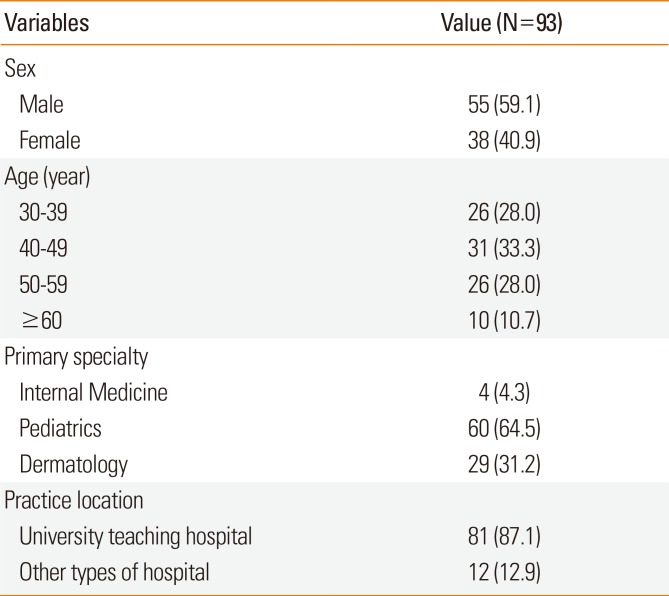





 PDF
PDF ePub
ePub Citation
Citation Print
Print



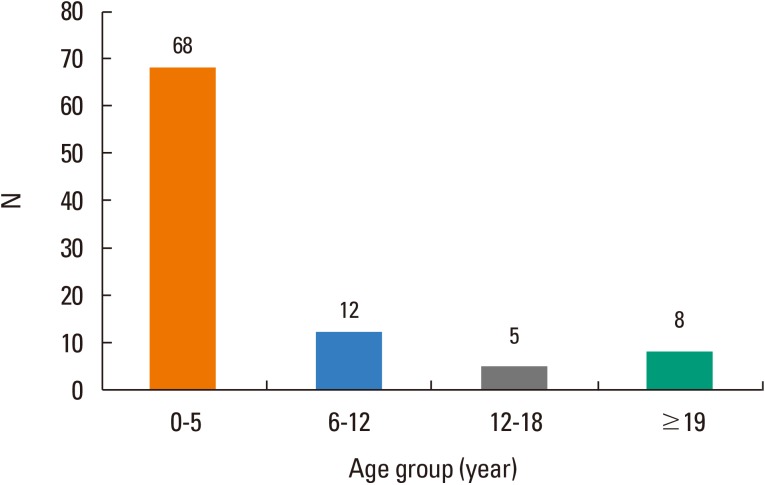
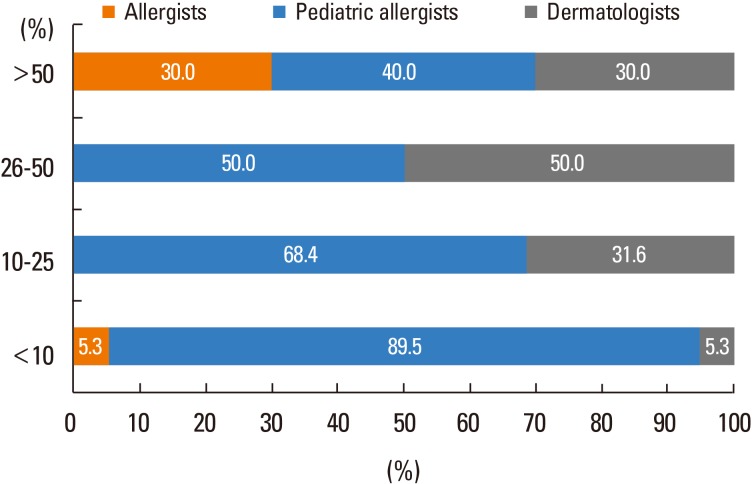
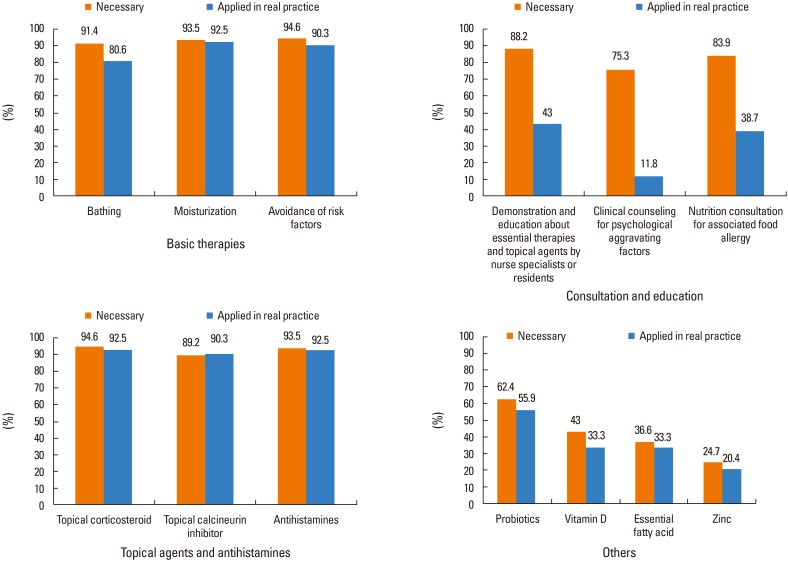
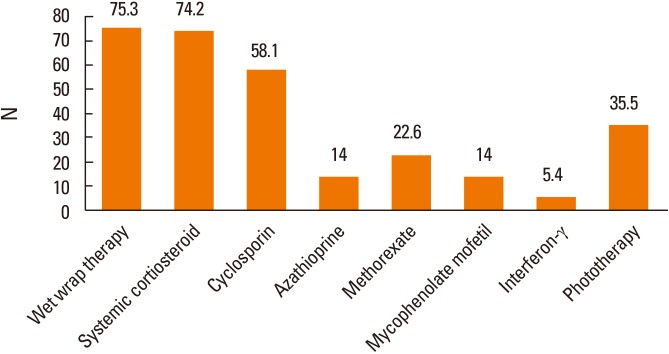
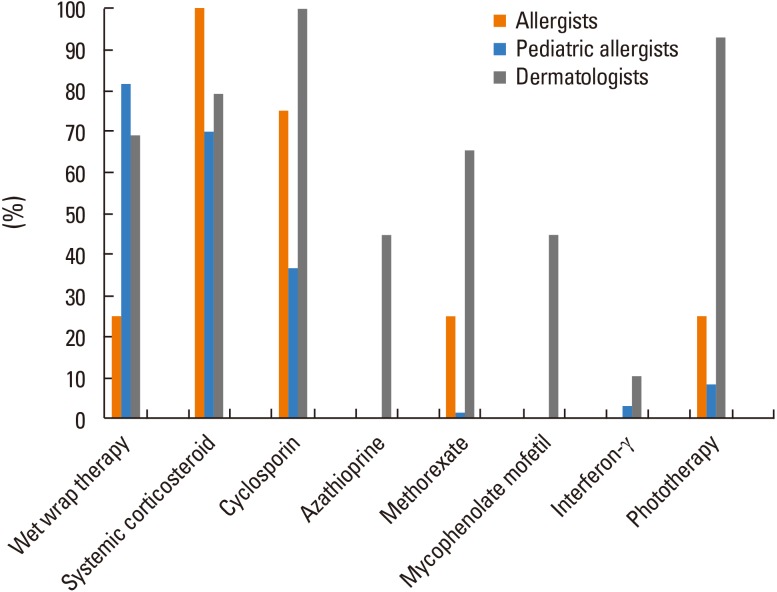
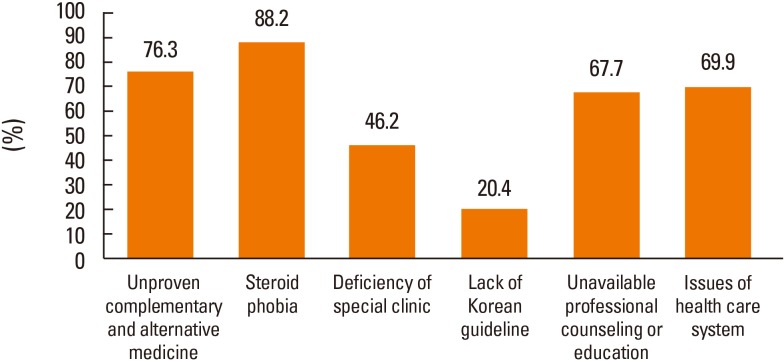
 XML Download
XML Download